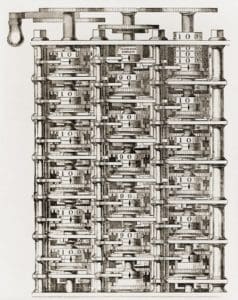 Amid the time warp that is the week between Christmas and New Year’s, don’t forget to raise a glass of eggnog in honor of Charles Babbage, the “Father of Computing,” born on Dec. 26, 1791. The English mathematician’s prescient plans—some of which didn’t make it off paper for more than 150 years—called for machines that could perform sequences of calculations and even store data.
Amid the time warp that is the week between Christmas and New Year’s, don’t forget to raise a glass of eggnog in honor of Charles Babbage, the “Father of Computing,” born on Dec. 26, 1791. The English mathematician’s prescient plans—some of which didn’t make it off paper for more than 150 years—called for machines that could perform sequences of calculations and even store data.
In 1821, Babbage drew up plans for the “Difference Engine,” a mechanical device that could compile mathematical tables. The Swedish printer George Scheutz built the Difference Engine in 1854, and the results were so accurate the American and British governments began using the device.
Babbage improved upon the design in his plans for Difference Engine No. 2. This version wasn’t constructed until 1991 when the British Science Museum took on the task (ultimately adding a Babbage-designed printer in 2000). (See how the Difference Engine works in this video.)
Babbage’s Analytical Engine
One reason Difference Engine No. 2 didn’t take off in Babbage’s lifetime was that he became distracted by his plans for the Analytical Engine—the very plans that earned him the moniker the “Father of Computing.” Babbage’s plans called for a machine that could perform any computation based on punch card instructions, as well as a machine that could offer sequential control and store information in a memory unit—so, a computer.
Babbage’s brain also envisioned lighthouse signaling; black box devices for investigating railway crashes; the use of decimal currency; and even time clocks. He was truly a man ahead of his time.
Photo: Everett Historical/Shutterstock.com
Tech Time Warp is a weekly feature that looks back at interesting moments and milestones in tech history.
